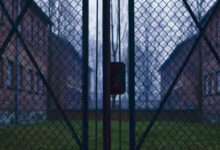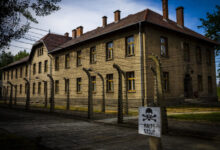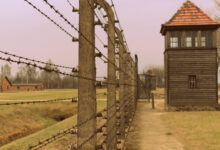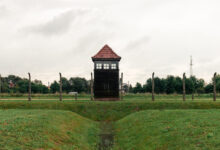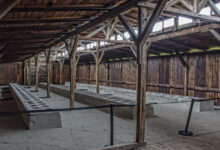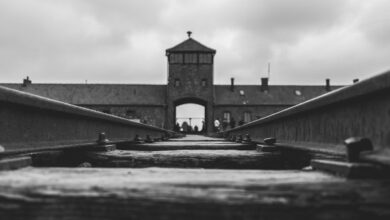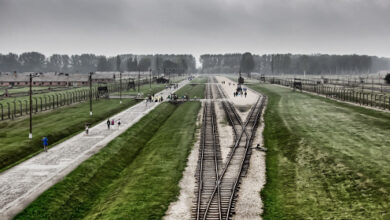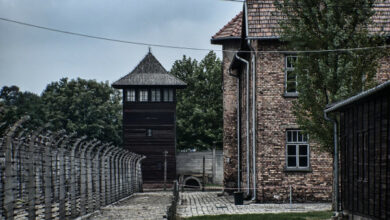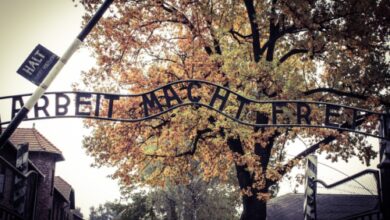Auschwitz Guided Tours for Individual Visitors
Explore Auschwitz: Personalized Auschwitz Guided Tours for Solo Travelers
Exploring the historical site of Auschwitz-Birkenau, you have the opportunity to engage with one of the most poignant relics of human history. Guided tours are available to individual visitors, offering an in-depth examination of the former concentration and extermination camp.
During a standard Auschwitz guided tour, which lasts approximately 3.5 hours, you are provided with comprehensive insights by professional guide-educators. This includes a visit to both Auschwitz I and Auschwitz II-Birkenau, connected by a shuttle bus service included in the tour.
The tours’ content is curated to facilitate a respectful understanding of the events that unfolded at the site, where over a million people lost their lives during the Holocaust.
The Auschwitz Guided Tours for Individual Visitors includes the use of headsets to ensure you don’t miss any details as you move through the grounds. Given the importance and gravity of the site, tours are designed to reflect the deep historical significance of the events and remembrance of the victims.
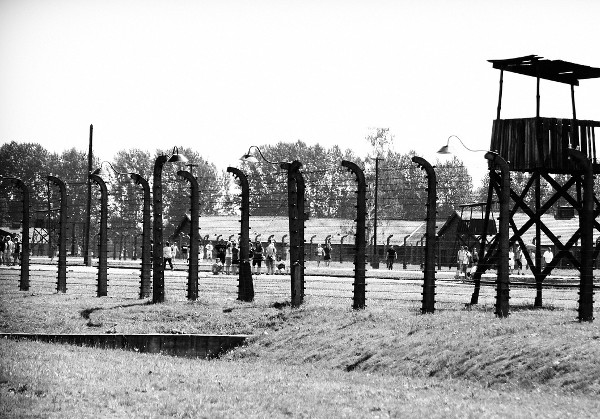
Should your schedule not permit an in-person visit, or if you prefer to reflect on this history from a distance, online Auschwitz guided tours are also offered.
Lasting around two hours, these tours include live narration by a guide, supplemented with multimedia materials such as archival photographs and documents. This remote option provides a flexible and accessible alternative to engage with this essential chapter of history.
Table of Contents:
Booking Auschwitz Guided Tours for Individual Visitors
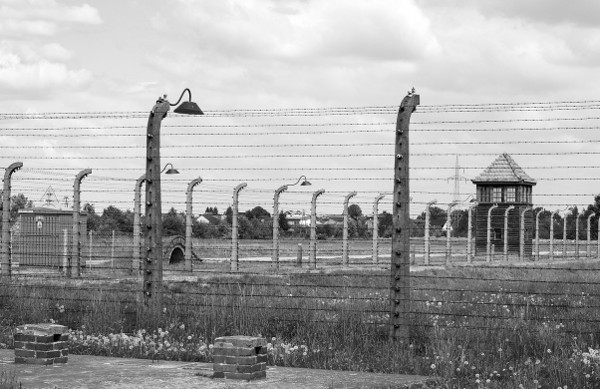
When visiting Auschwitz-Birkenau, it’s essential to consider the time of year and to book your guided tour well in advance due to the high volume of visitors. Understanding the admission fees is also crucial for a streamlined experience.
Selecting a Month for Auschwitz Guided Tours
The time of year you choose to visit can significantly affect your experience. Here is what you can expect depending on the month:
- May to August: Peak tourist season with longer opening hours. Expect crowds and book Auschwitz tour early.
- September to November: Less crowded with more temperate weather.
- December to February: Cold and possibly snowy conditions, fewer visitors.
- March to April: Transition period, fewer tourists but can be unpredictable weather-wise. Read also Auschwitz Easter Tour
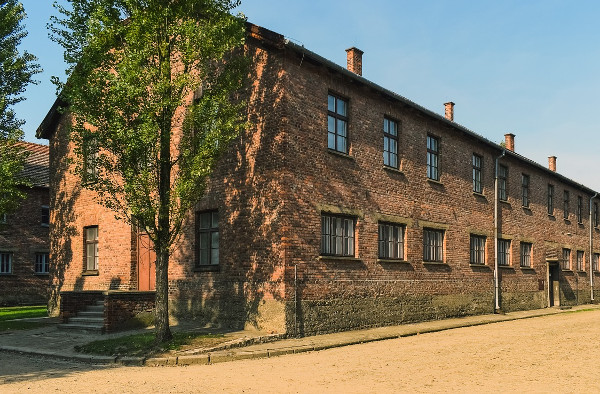
Booking Auschwitz Guided Tours for Individual Visitors in Advance
Advance booking is imperative to secure your spot on a tour:
- Reservations: Endorsed to be made at least two months in advance via visit.auschwitz.org.
- Online Tours: Available if you prefer a virtual experience, lasting about two hours.
Understanding Admission Fees to Museum of Auschwitz
Here’s a quick overview of admission prices and tour options:
Admission: Free to access Auschwitz-Birkenau; however, there is a charge for the guided tour.
Guided Tour with an Educator:
- 100 PLN in Polish.
- 110 PLN in other languages, including English.
- June, July and August: 7:30 am to 7 pm daily.
- Opening hours are reduced for the remainder of the year; check visit.auschwitz.org for specifics.
Getting to Auschwitz

When travelling to the Auschwitz-Birkenau Memorial and Museum, it’s important to consider the logistics of your trip. You’ll need to locate the site and understand the parking facilities and accessibility features available.
Locating Auschwitz
Auschwitz is situated in Oświęcim, a town in southern Poland, approximately 70 kilometres west of Kraków and 280 kilometres south-west of Warsaw.
To ensure you reach the site without any issues, use a reliable GPS system or a map with up-to-date road information. Regular road signs will direct you to “Muzeum Auschwitz.”
Car Park and Accessibility
Upon arrival at the site, you’ll find a designated car park for visitors. Here are details regarding the parking and accessibility:
- Parking Fees: Be prepared to pay a nominal fee for parking.
- Disabled Access: There are allocated parking spaces for disabled visitors near the entrance of the museum to ensure easier access.
- Car Park Hours: The car park is operational coinciding with the museum’s opening hours, but it’s advisable to check the exact timings in advance as they may vary seasonally.
Remember to allow sufficient time to find a parking space and reach the museum entrance, especially during peak visiting hours.
Auschwitz Tour Options
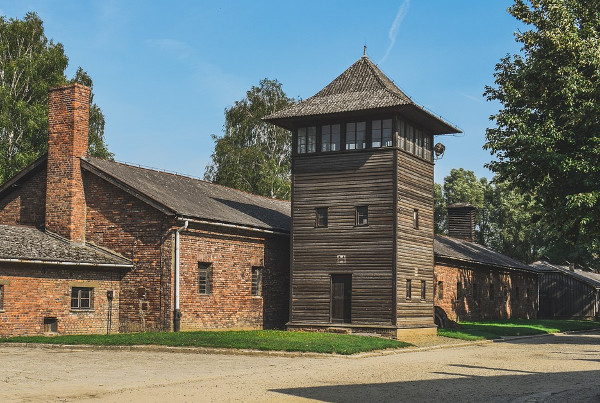
When planning your visit to the Auschwitz-Birkenau Memorial and Museum, you have various tour options that cater to different preferences, whether you aim for an in-person experience or prefer to engage from afar via an online setting. Read also article How to visit Auschwitz
General Auschwitz Tours
For Individual Visitors:
- Duration: Approximately 3.5 hours
- Locations: Auschwitz I and Auschwitz II-Birkenau
- Includes: Guide-educator, headset rental, transfer between sites
- Requirement: Personalised entry pass and ID
Note: It is advised that children under the age of 14 do not participate in visits to the Museum due to the sensitive nature of the content.
Online Guided Tour Options
Online Individual Visit:
- Format: Virtual tour accessible from your home
- Focus: Educative and historical insights with a guide
- Availability: Various times, pre-booking required
Note: Online guided tours are an alternative for those who wish to learn about the site’s history but are unable to visit in person. They provide a comprehensive educational experience similar to general tours, with the added convenience of remote access.
Auschwitz Educational Experience
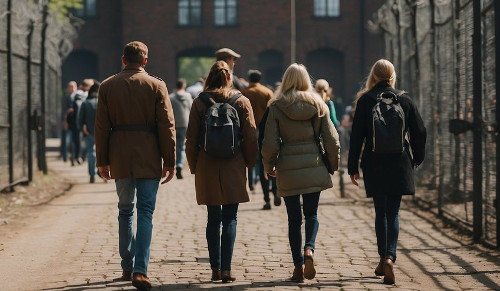
When visiting Auschwitz as an individual, you benefit from rich, educational experiences facilitated by guide-educators who utilise a variety of resources to convey the historical significance of the site. Read also Why Visit Aushwitz?
Engaging with Guide-Educators
Interaction with guide-educators is a core component of your educational experience at Auschwitz.
Your guide is trained to share detailed historical facts about Auschwitz, answer any questions, and provide testimonies of survivors to enhance your understanding of the historical events.
This interaction allows for a more personal and in-depth learning experience.
- Interaction with the Guide: Encouraged to ask questions and engage in discussion.
- Education: Guide-educators focus on educating visitors about the complex history of the memorial and museum.
Exhibitions and Archives

The Auschwitz museum offers a wealth of exhibitions featuring multimedia materials, archival photographs, artistic works, documents, and testimonies that collectively provide a deeper insight into the history of the site.
- Multimedia Materials: Including video and audio, enhancing the historical narrative.
- Archival Photographs and Documents: Offering authentic insights into the past.
- Artistic Works: Interpreting the historical context through various forms of art.
- Testimonies of Survivors: Bringing personal stories to the forefront of education.
Auschwitz Guided Tours for Individual Visitors and Tour Languages
When you plan to visit Auschwitz, understanding the language options for guided tours is important.
Your experience will be enhanced by choosing a tour that you can follow comfortably.
Available Languages:
Auschwitz guided tours are offered in various languages to cater to international visitors. The most commonly available languages include:
- English: Tours in English are frequently available, providing a comprehensive understanding for a wide audience.
- German: Tours conducted in German offer insights into the history, catering to visitors from Germany or German-speaking regions.
- Polish: Being in Poland, tours in Polish are readily available and serve the local population as well as Polish-speaking tourists.
- French: French language tours allow French-speaking visitors to engage with the site’s historical context in their native language.
- Italian: Italian guided tours facilitate Italian-speaking visitors’ access to in-depth information about the camp’s history.
- Spanish: Spanish language tours help Spanish-speaking individuals to fully comprehend the historical significance of the site.
- Russian: Russian guided tours are offered, considering the historical connection and interest from Russian-speaking visitors.
To ensure you have access to a tour in your preferred language, it’s essential to book in advance. This guarantees your spot and helps avoid disappointment due to limited availability.
Note on Language Availability:
The exact schedule and availability of specific language tours might vary, so always check the official Auschwitz-Birkenau website or contact them directly for the most up-to-date information. Some languages might have more limited slots or could be subject to group size requirements.
Customising Your Tour:
If the scheduled language options do not meet your needs, private tours can potentially be arranged in additional languages, offering a more tailored experience. This can be especially helpful if you’re looking for a guide who speaks a less commonly provided language.
Auschwitz Guided Tours for Individual Visitors Details
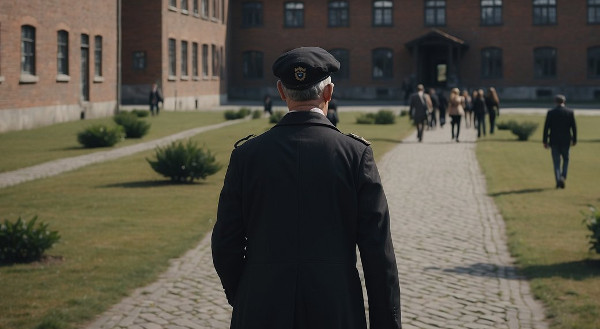
When you plan a visit to the Auschwitz-Birkenau Memorial and Museum, it’s essential to be informed about the tour duration, the rules for visiting, and considerations for different visitor groups to ensure a respectful and informative experience. Read also How many days do you need to visit Auschwitz?
Auschwitz Individual Tour Duration and Schedule
Guided tours for individual visitors typically last approximately 3.5 hours. These tours include a comprehensive visit to both the Auschwitz I and Auschwitz II-Birkenau sites. The schedule for these tours can vary, so you should check for available times and book your entry pass in advance, preferably online.
- Opening Hours: Please verify the most up-to-date opening hours on the official website before your visit.
- Tour Schedule: Tours may start at different times throughout the day; early booking is recommended to secure your preferred slot.
Rules for Visiting Auschwitz
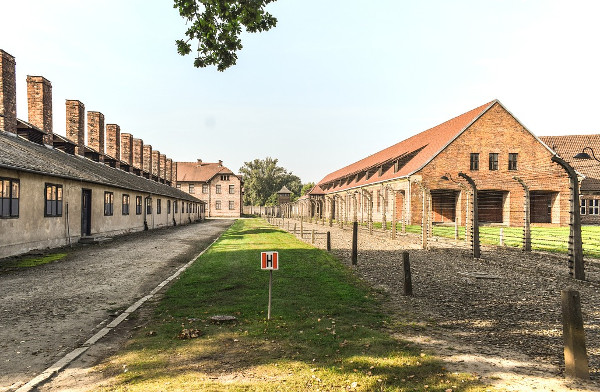
Your visit to Auschwitz is governed by several important rules meant to maintain the solemnity of the site.
- Backpacks and Handbags: Large backpacks and handbags are not permitted on the grounds. It is advised to only bring essentials and use small bags.
For the full list of the rules of visiting, you can consult the museum’s official website or the information provided at the time of booking your tour.
Group and Age Considerations
The tours are designed to cater to a variety of visitors, but the nature of the content may not be suitable for children under the age of 14 years. Educational entry cards are available for students and other groups.
- Individual Touring: Personalised attention from guides is an advantage of small group tours.
- Group Size: Typically, group tours comprise a limited number of individuals to ensure optimal learning conditions and respect for the site.
Booking a tour in advance is crucial to ensure availability, as entry to the museum is managed via timed entry passes to prevent overcrowding and preserve the dignity of the memorial site.
Exploring the Auschwitz Camps
Embarking on a tour of Auschwitz offers you a profound window into one of history’s darkest chapters. Through guided tours, you can visit the extensive grounds and preserved buildings, experiencing the tangible remnants of the camps’ tragic past.
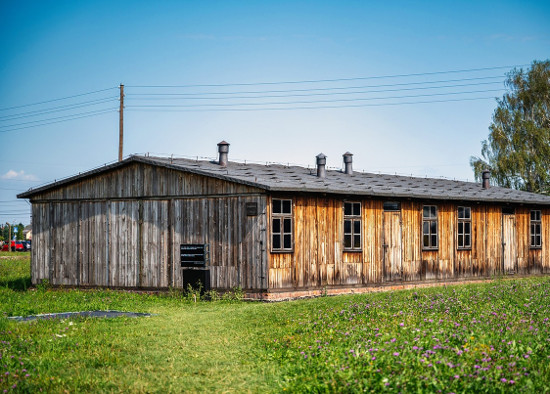
Auschwitz I Main Tour
Auschwitz I, the main camp, functions as the primary site of the memorial and museum. Here, your guided tour will encompass the infamous wrought-iron gate inscribed with “Arbeit Macht Frei” (Work Sets You Free), various blocks that housed prisoners, and the execution wall.

Key locations include the camp’s administration office and the infamous Block 11, often referred to as the “Death Block.” You will see at first hand the harsh realities of life within the camp and gain a deeper understanding of the systemic atrocities committed.
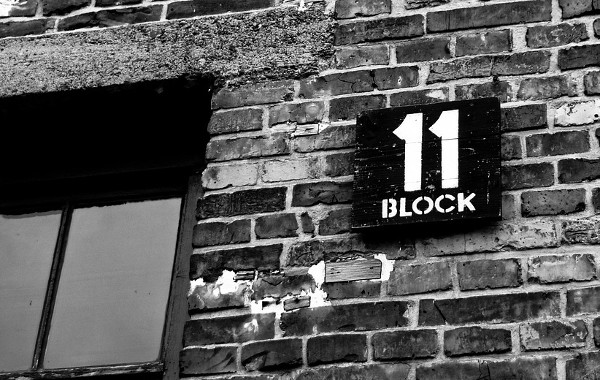
Key Locations in Auschwitz I:
- Administration Buildings: Site of camp management and central operations.
- Prisoner Blocks: Living quarters that outline daily life and survival.
- Execution Wall: The chilling site where thousands were executed.
- The Gas Chamber and Crematorium: Where countless lives were cruelly extinguished.
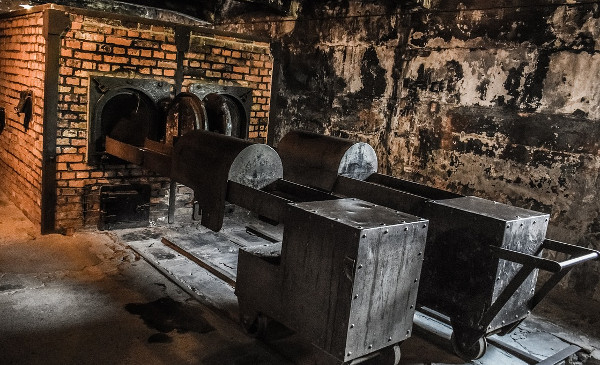
Auschwitz II-Birkenau Extension
A short transfer from Auschwitz I, the Auschwitz II-Birkenau section is an essential extension of your visit.
Often perceived as the epitome of the Holocaust’s industrial-scale genocide, Birkenau’s vast expanse contains the remnants of the gas chambers and crematoria.
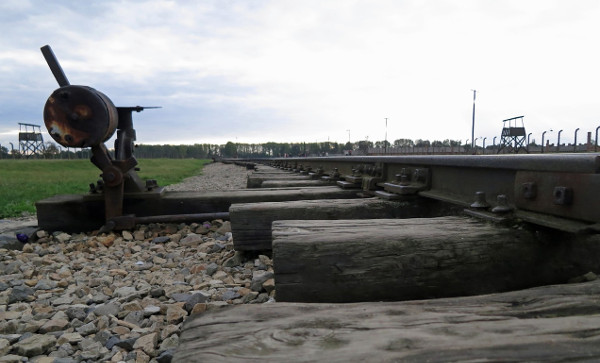
As you walk along the railway platform where selections took place, the enormity of the crimes committed here becomes palpable.
Significant Areas in Auschwitz II-Birkenau:
- Railway Platform: The arrival point for prisoners and site of the harrowing selections.
- Ruins of Gas Chambers and Crematoria: Testaments to the mass extermination that occurred.
- Kanada Storage Area: Named by the prisoners, where confiscated belongings were sorted.
Auschwitz III – Monowitz
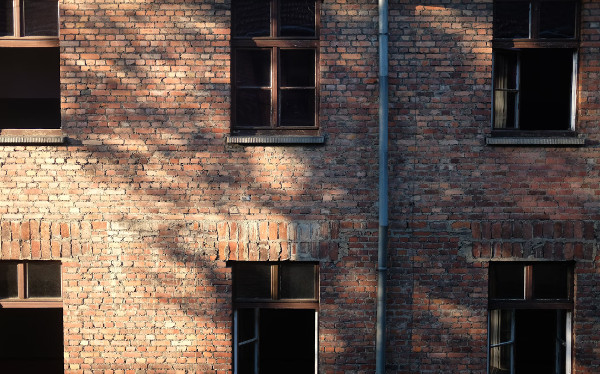
Although not as frequently included in standard tours, Auschwitz III – Monowitz was a work camp closely linked to the Buna synthetic rubber factory. Visiting this site gives you a broader perspective on the complex system of sub-camps and the industrial involvement in the prisoners’ exploitation.
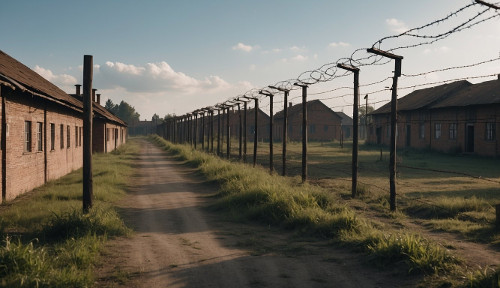
By exploring Auschwitz III, you comprehend the full scope of forced labour and its role in the Nazi economy.
Insights into Auschwitz III – Monowitz:
- Factory Connection: Understanding the camp’s industrial role in the production of war materials.
- Prisoner Labour: The conditions faced by prisoners used as forced labourers.
Additional Information about Auschwitz Guided Tours for Individual Visitors
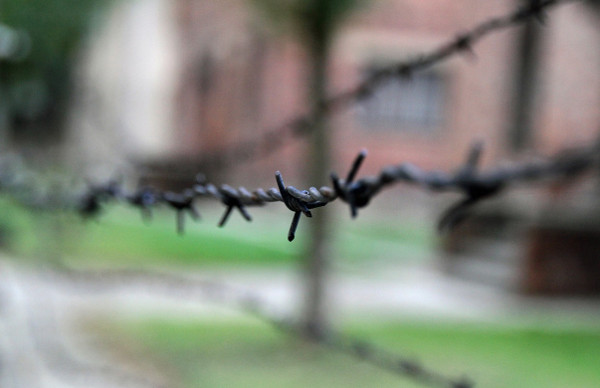
Before embarking on your visit to Auschwitz, it’s important to be aware of certain practicalities regarding items you may bring and where to find more detailed information or assistance.
Items Allowed and Storage
Your personal belongings are subject to specific regulations at Auschwitz. Small bags up to A4 size (30 x 20 x 10 cm) are permitted on the premises. For larger luggage, secure storage options are available for a fee at the visitors’ centre. Certain items, like large backpacks or suitcases, cannot be taken inside, and storage space may be limited, so only bring what is necessary.
Remember to carry your ID for any potential checks, and be mindful that belongings may be inspected for security reasons. Items like water bottles are allowed, but snacks should be consumed outside exhibition areas.
Read also What not to do at Auschwitz
Further Resources and Contacts
For more detailed information and visiting regulations, visit the official Auschwitz-Birkenau website.
On the site, you can also make arrangements for guide services or group bookings. They also provide a form for visitors who wish to arrange for a private guide. However, be aware this should be done well in advance due to high demand.
More articles about Auschwitz:
If you need entry passes or require further narration on what you will witness ‘in front of your eyes’, the online booking system is the primary platform for reservations.
For specifics regarding age-related concessions or enquiries about changing booked dates, you should use the contact details provided on the official website. Remember, it’s vital to review the latest updates as details may fluctuate over time.
Lastly, if you’re seeking more information not addressed in the form of FAQs or if you’re a private individual requiring assistance, reach out to the museum staff via the contact information provided on the Auschwitz Museum’s official website.
They can offer guidance and ensure that your visit is both informative and respectfully managed.
